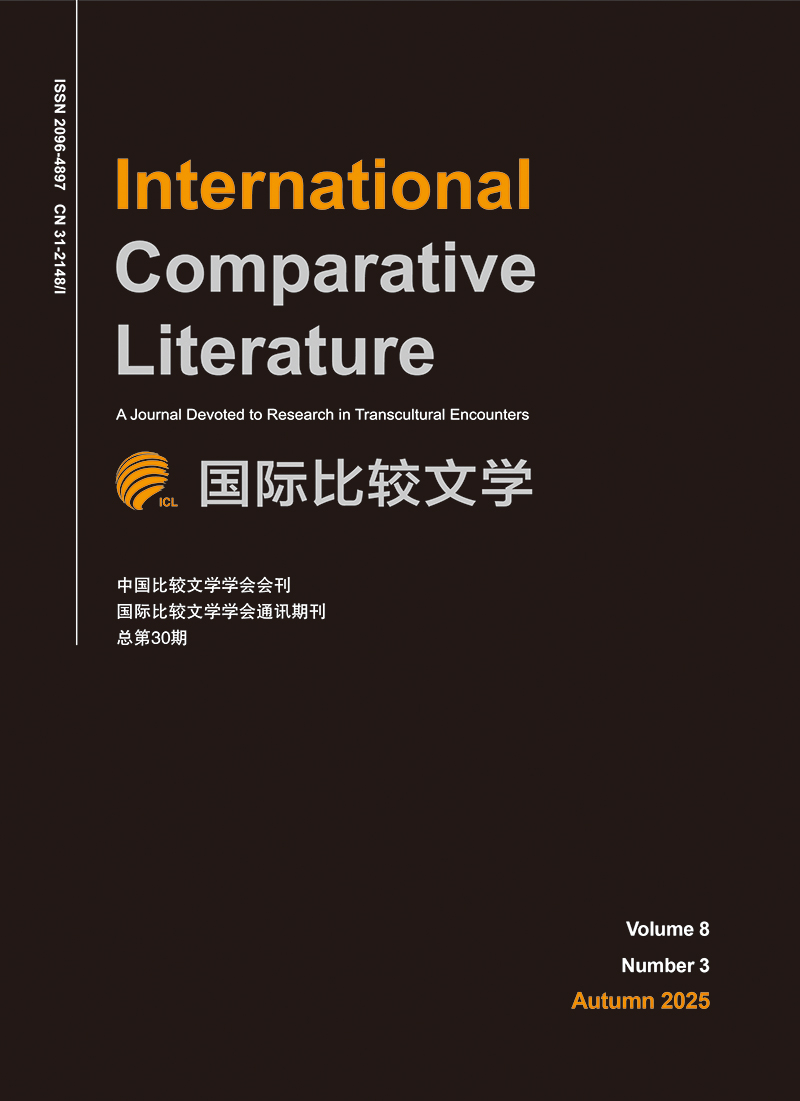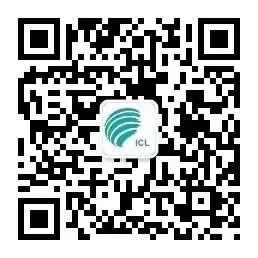|
[1]
|
Antosik, Stanley J. "The Confession of a Cultural Elitist:Hesse's Homecoming in Die Morgenlandfahrt" (The Confession of a Cultural Elitist:Hesse's Homecoming in The Journey to the East).The Germanic Review:Literature, Culture, Theory 53, no.2(1978):63-68.
|
|
[2]
|
Crenshaw, Karen O.&Richard H.Lawson. "Technique and Function of Time in Hesse's Morgenlandfahrt:A Culmination" (Technique and Function of Time in Hesse's The Journey to the East:A Culmination).Mosaic:An Interdisciplinary Critical Journal 5, no.3(Spring 1972):53-59.
|
|
[3]
|
Derrenberger, John. "Who Is Leo?:Astrology in Hermann Hesse's Die Morgenlandfahrt" (Who Is Leo?:Astrology in Hermann Hesse's The Journey to the East).Monatshefte(Monthly) 67, no.2(Summer 1975):167-72.
|
|
[4]
|
Eliade, Mircea.Autobiography Vol.2:1937-1960, Exile's Odyssey.Translated by Mac Linscott Ricketts.Chicago:University of Chicago Press, 1988.
|
|
[5]
|
——.The Sacred and the Profane:the Nature of Religion.Translated by Willard R.Trask.New York:Harcourt, Inc., 1987.
|
|
[6]
|
——.Symbolism, the Sacred, and the Arts.Edited by Diane Apostolos-Cappadona.Translated by Diane Apostolos-Cappadona, Frederica Adel, Derek Coltman, and Mac Linscott Ricketts.New York:Crossroad, 1986.
|
|
[7]
|
——.Journal II, 1957-1969.Translated by Fred H.Johnson.Chicago and London:University of Chicago Press, 1977.
|
|
[8]
|
——.Occultism, Witchcraft and Cultural Fashions.Chicago:University of Chicago Press, 1976.
|
|
[9]
|
——.Myth and Reality.Translated by Willard R.Trask.New York:Harper&Row, Publishers, 1975.
|
|
[10]
|
——.The Quest:History and Meaning in Religion.Chicago and London:The University of Chicago Press, 1969.
|
|
[11]
|
——.The Two and the One.Translated by J.M.Cohen.Chicago:University of Chicago Press, 1965.
|
|
[12]
|
——.Patterns in Comparative Religion.Translated by Rosemary Sheed.New York and Cleveland:The World Publishing Company, 1963.
|
|
[13]
|
——.Images and Symbols:Studies in Religious Symbolism.Translated by Philip Mairet.London:Harvill Press, 1961.
|
|
[14]
|
——.Myth, Dreams and Mysteries:The Encounter between Contemporary Faiths and Archaic Realities.Translated by Philip Mairet.London:Harvill Press, 1960.
|
|
[15]
|
——.Cosmos and History:The Myth of the Eternal Return.Translated by Willard Trask.Princeton:Princeton University Press, 1959.
|
|
[16]
|
——.Birth and Rebirth:The Religious Meanings of Initiation in Human Culture.Translated by Willard R.Trask.New York:Harper&Brothers Publishers, 1958.
|
|
[17]
|
——.Yoga, Immortality and Freedom.Translated by Willard Trask.London and New York:Routledge and Kegan Paul, 1958.
|
|
[18]
|
Hesse, Hermann.The Journey to the East.Translated by Hilda Rosner.New York:Farrar, Straus&Giroux, Inc., 1972.
|
|
[19]
|
——.Die Morgenlandfahrt(The Journey to the East).Frankfurt:Suhrkamp Verrlag, 1959.
|
|
[20]
|
M arshall, Peter.Nature's Web:An Exploration of Ecological Thinking.London:Simon&Schuster Ltd., 1992.
|
|
[21]
|
Olson, Carl. "Theology of Nostalgia:Reflections on the Theological Aspects of Eliade's Work." Numen 36, Fasc.1(Jun., 1989):98-112.
|
|
[22]
|
Roberts, Peter.From West to East and Back Again:An Educational Reading of Herman Hesse's Later Works.Boston:Sense Publishers, 2012.
|
|
[23]
|
Stelzig, Eugene L. "Die Morgenlandfahrt:Metaphoric Autobiography and Prolegomenon to Das Glasperlenspiel" (The Journey to the East:Metaphoric Autobiography and Prolegomenon to The Glass Bead Game).Monatshefte(Monthly) 79, no.4 (Winter 1987):486-95.
|
|
[24]
|
Stuckrad, Kocku von. "Utopian Landscapes and Ecstatic Journeys:Friedrich Nietzsche, Hermann Hesse, and Mircea Eliade on the Terror of Modernity." Numen 57 (2010):78-102.
|
|
[25]
|
(俄)巴赫金:《拉伯雷研究》(上), 李兆林、夏忠宪等译, 石家庄:河北教育出版社, 1998年.[Bakhtin.Labolei yanjiu(A Study of Rabelais).Vol.1.Translated by LI Zhaolin and XIA Zhongxian, etc.Shijiazhuang:Hebei Education Press, 1998.]
|
|
[26]
|
陈敏:《〈东方之旅〉中的多文化共栖思想》, 《中国社会科学院研究生院学报》2012年第4期, 第92第2化页。[CHEN Min. "Dongfangzhilüzhong de duowenhua gongqi sixiang" (The Thinking of Multi-culture Xommensalism in Journey to the East).Zhongguo shehuikexueyuan yanjiushengyuan xuebao (Journal of Graduate School of Chinese Academy of Social Sciences) 4(2012):92-97.]
|
|
[27]
|
范劲:《〈玻璃球游戏〉〈易经〉和新浪漫主义理想》, 《中国比较文学》2011年第3期, 第109-120页。[FAN Jin. "Boliqiu youxi, Yijing he xinlangmanzhuyi lixiang" (Das Glasperlenspiel, Yi Jing and Neo-Romanticism).Zhongguo bijiao wenxue(Comparative Literature in China) 3(2011):109-20.]
|
|
[28]
|
郭利云:《流寓中的锐意丰盈-论黑塞作品中 "乡愁" 的意涵与嬗变》, 《烟台大学学报(哲学社会科学版)》2020年第6期, 第66-73页。[GUO Liyun. "Liuyu zhong de ruiyi fengying:lun heisai zuopin zhong ‘xiangchou’ de yiyun yu shanbian" (Determination and Abundance While Staying Abroad:On the Implications and Evolution of Nostalgia in Hesse's Works).Yantai daxue xuebao zhexue shehuikexue ban(Journal of Yantai University[Philosophy and Social Science Edition]) 6(2020):66-73.]
|
|
[29]
|
(德)赫尔曼·海塞等:《陀思妥耶夫斯基的上帝》, 斯人等译, 北京:社会科学文献出版社, 1999年。[Hesse, Hermann, etc.Tuosituoyefusiji de shangdi(Dostoyevsky's God).Translated by SI Ren, etc.Beijing:Social Sciences Academic Press, 1999.]
|
|
[30]
|
(德)黑塞:《纽伦堡之旅》, 陈迅译, 南京:江苏凤凰文艺出版社, 2017年。[Hesse, Hermann.Niulunbao zhilü(A Trip to Nuremberg).Translated by CHEN Xun.Nanjing:Jiangsu Fenghuang Literature and Art Publishing House, 2017.]
|
|
[31]
|
——:《乡愁》, 陈晓南译, 上海:上海三联书店, 2013年。[——.Xiangchou(Peter Camenzind).Translated by CHEN Xiaonan.Shanghai:Shanghai Joint Publishing Press, 2013.]
|
|
[32]
|
——:《东方之旅》, 蔡进松译, 上海:上海三联书店, 2013年。[——.Dongfang zhi lü(Die Morgenlandfahrt).Translated by CAI Jinsong.Shanghai:Shanghai Joint Publishing Press, 2013.]
|
|
[33]
|
——:《荒原狼》, 赵登荣、倪诚恩译, 上海:上海译文出版社, 2010年。[——.Huangyuan lang(Der Steppenwolf).Translated by ZHAO Dengrong and NI Cheng' en.Shanghai:Shanghai Translation Publishing House, 2010.]
|
|
[34]
|
——:《悉达多》, 杨玉功译, 丁君君校, 上海:上海人民出版社, 2009年。[——.Xidaduo(Siddhartha).Translated by YANG Yugong.Edited by DING Junjun.Shanghai:Shanghai People's Publishing House, 2009.]
|
|
[35]
|
——:《德米安:埃米尔·辛克莱的彷徨少年时》, 丁君君、谢莹莹译, 上海:上海人民出版社, 2008年。[——.Demi' an(Demian).Translated by DING Junjun and XIE Yingying, Shanghai:Shanghai People's Publishing House, 2008.]
|
|
[36]
|
——:《婚约:黑塞中短篇小说选》, 张佩芬、王克澄等译, 上海:上海译文出版社, 2006年。[——.Hunyue:Heisai zhongduanpian xiaoshuoxuan(Die Verlobung).Translated by ZHANG Peifen&WANG Kecheng, etc.Shanghai:Shanghai Translation Publishing House, 2006.]
|
|
[37]
|
——:《朝圣者之歌:黑塞诗歌散文集》, 谢莹莹编, 北京:中国广播电视出版社, 2000年。[——.Chaoshengzhe zhige:Heisai shige sanwen ji(Pilgrim Songs:A Collection of Poems and Essays by Hesse).Edited by XIE Yingying.Beijing:China Radio&Television Publishing House, 2000.]
|
|
[38]
|
黄增喜:《从神圣到世俗-伊利亚德宗教史视野中的人与自然》, 《世界宗教研究》2018年第5期, 第26-37页。[HUANG Zengxi.Cong shensheng dao shisu:Yiliyade zongjiaoshi shiyezhong de ren yu ziran(From Sacred to Secular:Man and Nature in the Perspective of Eliade's History of Religions).Shijie zongjiao yanjiu(Studies in World Religions) 5(2018):26-37.]
|
|
[39]
|
刘小枫编:《大革命与诗化小说:诺瓦利斯选集》第2卷, 林克等译, 北京:华夏出版社, 2008年。[LIU Xiaofeng, ed.Dageming yu shihua xiaoshuo:Nuowalisi xuanji(Novalis:Revolution and Poetic Roman).Vol.2.Translated by LIN Ke, etc.Beijing:Huaxia Publishing House, 2008.]
|
|
[40]
|
(德)马克斯·舍勒:《人在宇宙中的地位》, 李伯杰译, 刘小枫校, 贵阳:贵州人民出版社, 1989年。[Scheler, Max.Ren zai yuzhou zhong de diwei(Die Stellung des Menschen im Kosmos).Translated by LI Bojie.Edited by LIU Xiaofeng.Guiyang:Guizhou People's Publishing House, 1989.]
|
|
[41]
|
夏光武:《黑塞作品在美国的接受与影响》, 华东师范大学博士论文, 2006年。[XIA Guangwu. "Heisai zuopin zai meiguo de jieshou yu yingxiang" (Hermann Hesse's Works in America:AStudy in Acceptance and Impact).Ph D diss., East China Normal University, 2006.]
|
|
[42]
|
谢魏:《现代性与怀乡-黑塞的〈东方之旅〉解读》, 《国外文学》2018年第4期, 第116-123。[XIE Wei. "Xiandaixing yu huaixiang:Heisai de dongfangzhilüjiedu" (Modernity and Nostalgia:A Reading of Hermann Hesse's Die Morgenfahrt).Guowai wenxue(Foreign Literatures) 4(2018):116-23.]
|
|
[43]
|
游斌:《基督教史纲》(插图本), 北京:北京大学出版社, 2010年。[YOU Bin.Jidujiao shigang(An Illustrated Brief History of Christianity).Beijing:Peking University Press, 2010.]
|
|
[44]
|
张弘:《东西方文化整合的内在之路-论黑塞的〈东方之旅〉》, 《华东师范大学学报(哲学社会科学版)》2010年第4期, 第82-88页。[ZHANG Hong. "Dongxifang wenhua zhenghe de neizai zhilu:lun Heisai de Dongfangzhilü" (The Inner Way of the Integration of Eastern and Western Cultures:On Hesse's The Journey to the East).Huadong shifan daxue xuebao zhexue shehuikexue ban(Journal of East China Normal University[Humanities and Social Sciences]) 4(2010):82-88.]
|
|
[45]
|
——:《黑塞与审美主义》, 《浙江大学学报(人文社会科学版)》2008年第1期第98-105页。[——. "Heisai yu shenmei zhuyi" (Hermann Hesse and Aestheticism).Zhejiang daxue xuebao renwen shehuikexue ban (Journal of Zhejiang University[Humanities and Social Sciences]) 1 (2008):98-105.]
|
|
[46]
|
张弘、余匡复:《黑塞与东西方文化的整合》, 上海:华东师范大学出版社, 2010年。[ZHANG Hong and YU Kuangfu.Heisai yu dongxifang wenhua de zhenghe(Hermann Hesse and the Integration of Eastern and Western Cultures).Shanghai:East China Normal University Press, 2010.]
|
|
[47]
|
张佩芬:《黑塞研究》, 上海:上海外语教育出版社, 2006年。[ZHANG Peifen.Heisai yanjiu(A Study on Hermann Hesse).Shanghai:Shanghai Foreign Language Education Press, 2006.]
|

 点击查看大图
点击查看大图



 下载:
下载:

